Text

Two common genets (Genetta genetta) photographed in the Montseny Natural Park. This natural park is located in the mountainous forests around the Montseny mountain range, at the border between the Barcelona Metropolitan Ambit, Central Catalonia, and Comarques Gironines regions of Catalonia.
Genets are originally from Africa and the Arabian peninsula, but have also been living in the Iberian peninsula, the Balearic islands, and Occitania for centuries. There doesn't seem to be scientific consensus on when exactly they arrived here, though most point at them being introduced by the Ancient Romans.
Photo from femturisme.cat.
#natura#parc natural del montseny#montseny#catalunya#fotografia#animals#wildlife#animal photography#fauna#wildlife photography#catalonia#europe#travel#wanderlust#earth#photography#curators on tumblr#wild animals#nature#nature photography
22 notes
·
View notes
Text

Forest in the Puigsacalm mountain (Comarques Gironines, Catalonia).
Photo by rubenramsc on Instagram.
89 notes
·
View notes
Text
Vinc a recordar que existeix aquesta versió metal de la Muixeranga
7 notes
·
View notes
Note
This is a random personal question that involves some historic knowledge, but here goes. Do you know if there were any reactions in Catalunya when 25 de Abril happened in Portugal in 1974? I know there was the obvious state censorship, and the Franquists were watching it very carefully trying to prevent something similar happening. I'm asking since I know many Iberian resistance movements were in contact with eachother, so I was wondering if there were any reactions from the civilian population
Yes!
People learned about the Carnation Revolution and were admired and happy for Portuguese people. It was talked about in the newspapers and the newspapers of the moment say that the kiosks were empty because so many people were buying the newspaper to know about it.
Lluís Llach (the most famous Catalan singer-songwriter of all times) wrote a song called "Abril 74" showing how much Portugal was an inspiration to us. This is a BEAUTIFUL song, but as you’ll see the lyrics are still very subtle to avoid censorship.
This is the original song, sang by Lluís Llach in his album published in 1975:
youtube
I’ll post the lyrics in Catalan and the translation to English:
Companys, si sabeu on dorm la lluna blanca
digueu-li que la vull
però no puc anar a estimar-la
que encara hi ha combat
Comrades, if you know where the white moon sleeps
tell her that I want her
but that I can’t go to love her
because there’s still fight left.
Companys, si coneixeu el cau de la sirena
enllà enmig de la mar
jo l'aniria a veure
però encara hi ha combat.
Comrades, if you know the mermaid’s nest
there, in the middle of the sea,
I would go see her
but there’s still fight left.
I si un trist atzar m'atura i caic a terra
porteu tots els meus cants
i un ram de flors vermelles
a qui tant he estimat...
Si guanyem el combat
And if a sad fate stops me and I fall to the ground,
take all my singing
and a bouquet of red flowers
to who I have loved so much...
If we win the fight
Coneixeu el cau de la sirena
enllà enmig de la mar
jo l'aniria a veure
però encara hi ha combat.
Know the mermaid’s nest
there, in the middle of the sea,
I would go see her
but there’s still fight left.
Companys, si enyoreu les primaveres lliures
amb valtros vull anar
que per poder-les viure
jo me n'he fet soldat.
Comrades, if you miss the free springs,
I want to go with you
for I have become their soldier
to be able to live them.
I si un trist atzar m'atura i caic a terra
porteu tots els meus cants
i un ram de flors vermelles
a qui tant he estimat...
quan guanyem el combat.
And if a sad fate stops me and I fall to the ground
take all my singing
and a bouquet of red flowers
to who I have loved so much...
when we win the fight.
This song is still famous nowadays and has been covered by many bands and artists, including Meritxell Gené and Sílvia Pérez Cruz and was sang in the theatre play Maremar.
By the way, Lluís Llach was supposed to do 6 concerts as the presentation for this album, but was arrested before he could finish them. Initially, the concerts were approved, though he was not allowed to interact with the public nor to sing any song twice (he had to go back to the stage to tell the public he wasn’t allowed to do any bis at the end of the concert). He had to pay a fine of 100 000 pesetas and was banned from singing in public for more than 8 months (and then Franco died).
If you want to hear it, years later Grândola Vila Morena was also translated to Catalan:
youtube
We also had Fèlix Cucurull, who in 1967 had published the book Dos pobles ibèrics / "Two Iberian Peoples" (originally titled Portugal i Catalunya / "Portugal and Catalonia", but the censorship didn't let him publish that title because we couldn't put Catalonia and an independent country as equals). He was an activist both against Franco and against Marcelo Caetano. He helped Portuguese politicians with the preparations for April 25th and this made him become more relevant and admired in the anti-Francoist movement in Catalonia.
(@useless-portuguesefacts)
50 notes
·
View notes
Video
youtube
The song “Lladres” by the Valencian band Al Tall, explains the results of the Battle of Almansa, fought on the 25th of April, 1707, during the War of Spanish Succession. This battle was won by Castile and lost by the Valencian-Catalan-Aragonese forces, and meant the beginning of the Spanish invasion of the Valencian Country.
For this reason, April 25th is commemorated in the Valencian Country as a national day. Even after the defeat in 1707 and 1939 and all the impositions and persecutions, the Valencian people and language still live and resist.
Here are the lyrics in Valencian/Catalan and my translation to English:
Lladres que entreu per Almansa
Thieves who come in through Almansa
no sou lladres de saqueig,
you are not plundering thieves,
que ens poseu la cova en casa
you place your den in our home
i des d'ella governeu.
and from there you govern us.
Governeu de lladrocini
You govern in a thieve’s way
i rapinyeu governant;
And prey governing
sou fartons de vida llarga
You are gluttons with a long life
que mai voleu acabar.
that you never want to end.
El nostre plat cada dia
Our everyday meal
ens el torneu a llevar;
again you take away from us;
l'aparteu amb elegància
you push it aside with elegance
com si no tinguérem fam.
as if we were not hungry.
I amb rabosera elegància
And with astute elegance
ens heu forçat a oblidar
you have forced us to forget
que si sentim buit el ventre
that if we feel our stomachs empty
és per manca de menjar.
it’s for lack of food.
No s'ensenya en les escoles
It is not taught in schools
com van esclafar un país,
how they crushed a country
perquè d'aquella sembrada
because from that sowing
continuen collint fruits.
they still harvest the fruits.
Hi ha un licor en la resina
there’s a liquor in the resin
dels antics oliverars
of the ancient olive trees
que fa tendra la memòria
that softens the memory
i aclareix la veritat.
and clarifies the truth.
Lladres que entreu per Almansa
Thieves who come in through Almansa
no sou lladres de saqueig,
you are not plundering thieves,
que ens poseu la cova en casa
you place your den in our home
i des d'ella governeu.
and from there you govern us.
31 notes
·
View notes
Audio
April 25th 1707 is one of the most important days in our history, and is commemorated annually as a day of fight for national liberation of the Valencian Country.
The Valencian band Al Tall perfectly summed up in a song the events that led to this date. Here’s the lyrics in Valencian-Catalan and the translation to English.
Va ser a la tardor de 1705, que a Altea desembarca Baptista Basset
com a general de l'exèrcit de Carles el d'Àustria.
Entra en la Marina i passeja per pobles i viles
i en moltes comarques als maulets va distribuint armes
i donant raons, convencent a tots els llauradors
que l'Àrxiduc Carles ha promès suspendre tributs i gravàmens
i tot el país li va plantar cara al borbó Felip V.
It was in autumn 1705 when Baptista Basset disimbarked in Altea
as a general in the army of Charles of Austria.
He entered la Marina area and walked in all towns and cities
and in many shires, he distributed weapons to the maulets [armed groups of lower class agricultural workers who fought against Castilles’s rule on Valencia and for the rights of commoners against the nobility]
and giving reasons, convinving all the farm workers
that Archduke Charles had promised to eliminate all tributes and taxes
and the whole country confronted the Bourbon Philip V.
Els reis i governants de tota Europa es posen a l'aguait i al ple s'aboquen,
que està en discussió la corona dels regnes d'Espanya
i els dos aspirants una guerra van a provocar,
buscant aliances amb altres estats dos exèrcits preparen,
Felip de Borbó i Carles d'Àustria, tals són els seus noms.
The kings and governors of all Europe start to keep watch and completely pour themselves into it,
for the crown of the kingdoms of Spain is in discussion
and the two candidates are about to provoke a war,
looking for alliances with other states, they prepate two armies.
Philip of Bourbon and Charles of Austria: these are their names.
Als pobles van renàixer les esperances d'arrancar el poder als nobles senyors
i en poques setmanes el camí de València aplanaren;
maulets i aliats dominaren pobles i ciutats;
d'una punta a l'altra el país va tornar a obrir les arques per traure al carrer
les senyeres contra el botifler
i l'Arxiduc Carles a la porta de Quart aclamaren
i ell feu jurament d'obeir i defendre las lleis.
In the villages, the hopes were reborn of striping away the power from the noble lords
and in few weeks, they left the road to València flat
maulets and allies dominated towns and cities;
from one side to the other, the country again opened the chests to bring out the senyeres to the streets against the botifler [Philip V and his supporters].
And the Archduke Charles was acclaimed in the gates of Quart
and he swore to obey and defend the laws [one of the reasons for the war was that the people from the Aragonese kingdoms -Valencia, Catalonia, Mallorca and Aragon- wanted to preserve their laws, and Castille wanted to impose its absolutist laws and customs on everyone else, which was a huge step back for the rights and living conditions of the lower classes, as well as of the whole countries, who would become invaded territory of Castile]
Del dia que ara esmente guardeu memòria: el 25 d'Abril de 1707
que trista batalla va somoure la terra d'Almansa;
l'exèrcit borbó al de l'Àustria va vèncer d'un colp
i sense defenses ocuparen comarques senceres.
Mal dia va nàixer qui ordenà destruccions i matances.
Si el mal ve d'Almansa amb raó diuen que a tots alcança:
no es pot oblidar que en la boca del poble ha quedat.
Remember the day that I now say: the 25th of April of 1707
when the sad battle agitated the land of Almansa;
the Bourbonic army defeated the Austriacist one
and without defenses left, they [Bourbonics] occupied whole shires.
May he be cursed [literally “Bad day was he born”] he who ordered destructions and massacres!
If evil/pain comes from Almansa, they are right to say that it reaches everyone:
it can’t be forgotten that it has remained in the mouth of the people. [“When evil/pain comes from Almansa, it reaches everyone” is a popular saying in Valencian. Almansa was the first defeat of the Valencians and it served as the entrance door for the Bourbonic armies to occupy all the Kingdom of València]
Després que va sotmetre tot el país i va tractar els hòmens amb gran crueltat,
pensà que era l'hora d'augmentar el poder de la seua corona
i sense tardança promulgà el Decret de Nova Planta,
pel qual suprimia les lleis i costums de la pràctica antiga
i ens va prohibir que parlàrem la llengua d'ací.
After he forced into submission the whole country and treated men with great cruelty
he thought it was time to increase the power of his crown
and without delay promulgated the Decrete of Nova Planta
which suppressed the laws and customs of the old practise [banned the traditional laws of Valencia and the other kingdoms it occupied and forced everyone to have the Castillian ones, which gave the king absolute power]
and he forbid us to speak the language from here.
Senyors i senyores, de la història us hem fet el reconte;
si voleu seguir, en els llibres està tot escrit.
Ladies and gentlemen, we have told the history;
if you wish to continue, it’s all written in the books.
19 notes
·
View notes
Text
The University of Grenoble (France) wants is planning to remove Catalan classes from its curriculum next year. The students are organising this campaign to ask the university to keep it. Help them by signing this petition!
#coses de la terra#català#catalan#minority languages#minority language#minoritized languages#langblr#education#polyglot#language learning#university#languages#language
56 notes
·
View notes
Text
Enguany, la Diada Nacional del País Valencià se celebra en un context especialment hostil, en un País Valencià governat per aquells qui odien profundament el valencià i tot el què té a veure amb la cultura i el poble valencians. Però hi plantem cara.
#país valencià#actualitat#diada nacional del país valencià#25 d'abril#coses de la terra#valencià#països catalans
24 notes
·
View notes
Text

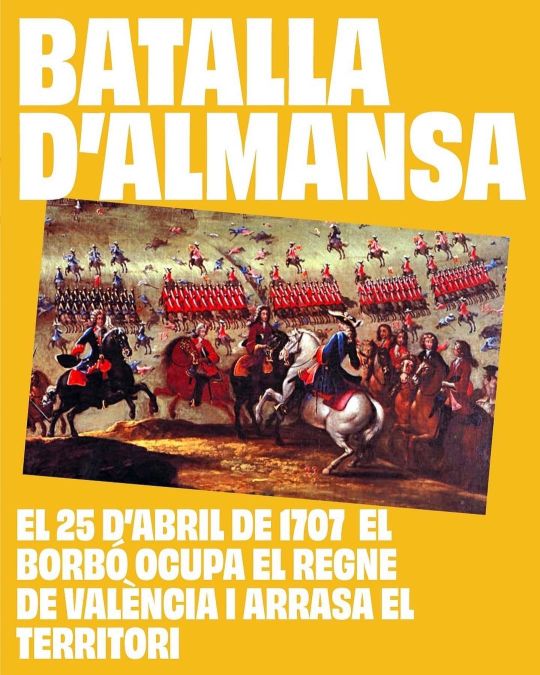
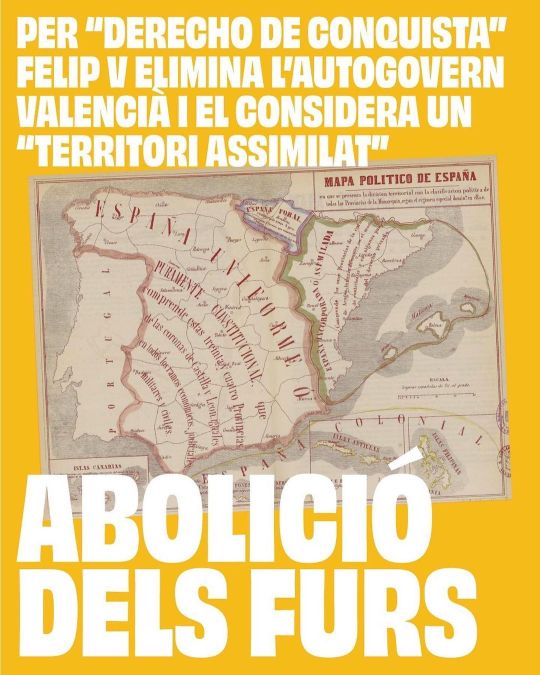
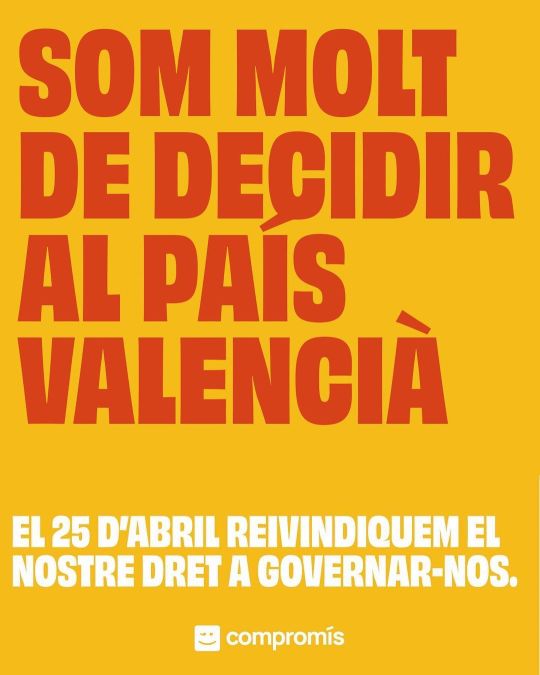
#diada del país valencià#25 d'abril#història#país valencià#coses de la terra#valencià#valencian#valencian country#batalla d'almansa#guerra de successió
22 notes
·
View notes
Text
My first thought was "what the hell?" because this doesn't look like Andorran traditional clothes AT ALL. In fact, nothing in this image reminds me of Andorra except for the fact that there are mountains. I was thinking "maybe they made a mistake and meant to write Austrian?" but then-

There it is. Of course this is an AI-generated image. And it's lying to you.
Let's take a look at this image, part by part:
The landscape is NOT Andorra. Andorran houses aren't made of wood like these ones. Andorran traditional houses are made of stone, usually with black slate roofs. And nobody would build their house on top of badly balanced rocks like in the image.
The women look more like German or Slovene or something like that than Andorrans, who are Southern European. But nowadays there's lots of immigrants in Andorra too so we won't focus on that, but it says something about beauty standards and representation in data bases that an AI is asked to generate someone from Southern Europe and created someone who looks like this.
The clothing has nothing to do with Andorran traditional clothes. The shirts are wrong (wrong sleeves, strange neckline, they shouldn't have lacey details on the shirt), the bodice-type thing over the shirt is wrong (this shape looks Germanic or Nordic), and the skirts are not representative. There is not one correct element, except the skirts which are not the most typical but could be okay if they were combined with other elements on them, and that's only because they're very basic. On the other hand, none of the elements that are characteristic of Andorran traditional clothes are present in the image: they aren't wearing ret or gandalla (fishnet on their hair), nor mitenes (fishnet gloves that don't cover the fingers), nor a shawl folded in triangular shape over their shoulders, nor skirt apron. Nothing.
And the caption of the post I'm assuming is also AI-generated, since it's false. It says that one of the most iconic elements of Andorran clothes is something called a "montera" which is a "headscarf used as a hair covering". The word "montera" doesn't exist in Catalan (Andorra's language), and I have made sure to check a dialectology and regionalisms dictionary in case it was a highly-localized term that I had never heard, but nope. It's only a word in Spanish, which is not the language from Andorra. The only similar word I've been able to fins is a "muntera", which a word from the 17th-19th centuries meaning a kind of hat with a very wide brim, which doesn't match the post's explanation. In any case, you might have meant "manteleta" (the shawl over the shoulders, which btw the women in the AI photo are not wearing). But it's not a head covering, the typical head covering is a fishnet (called ret or gandalla), though it's true that peasant women back in the day would often cover their hair with a kerchief, it hasn't become part of the "national costume" which is more based on the clothes for important days.
The other element mentioned in the caption "cassaca, a fitted jacket or bodice" is not true either. Cassaca is a misspelled version of the word "casaca", which simply means "justacorps" or "dress coat" (the typical 18th century male coat).
Andorran traditional clothes look the same as the traditional clothes of Catalunya Vella (Northern half of Catalonia). Like this:

Photo: men and women wearing traditional Andorran/Catalan clothes dance a traditional dance for the local festivities in Santa Coloma, Andorra. Photo from the Andorran newspaper El Periòdic. This is an example of simple or lower class clothing for formal occasions (fishnet hair and gloves wouldn't be worn to work, but the rest would stay the same).

Traditional formal clothing from Sant Julià de Lòria, Andorra. The photo shows the dancers who perform the Marratxa dance for the town's local festivities. Photo from the Andorran newspaper Bon Dia. This is an example of upper class clothing.

Another example of formal traditional clothing. Girls from Escaldes-Engordany (Andorra) wearing traditional clothes. Photo from the newspaper Ara Andorra.
You can see the elements very clearly in stylized illustrations like these:


Notice the iconic elements of Andorran/Catalan clothing: the fishnet around the hair, the simple shirt with a shawl folded in half to be worn over the shoulders in a triangular shape, a skirt with a pattern (most often, floral pattern) with a short apron over it, fishnet gloves that don't cover the fingers, and either the espardenyes shoes (made with laces, 1st and 2nd photo and the stamp) or in the case of upper class clothes they can be closed shoes (3rd photo). For formal occasions or upper class clothing, they would add a chocker collar. You can see all of these elements in the photos.
For more photos of traditional clothes from all around the Catalan Countries for different occasions, you can check out this post. I also talked about it here.
To conclude, I don't doubt OP did this with good intentions, but we shouldn't trust AI for information, we don't even know where it's getting the information from. For example, if you search "Andorran traditional dress" in Google Images, most of the results it gives you are actually the Portuguese traditional clothes. If you click on the links where those images come from, you can see that Google took them from newspapers articles about a festival of Portuguese culture that was celebrated in Andorra. You can check the context of that photo and understand that that's not what you were looking for. But with AI you can't do that, because it doesn't tell you where it's getting each element from.
In the case of this AI-generated image where nothing looks Andorran, my guess would be that OP typed "Andorra women's traditional clothing" and the AI generated an image of "women" (where the women that are over-represented in its database are young, thin, white, blonde, from Central or Northern European roots, fitting the current 21st century beauty standards and work like plucked eyebrows, shaving the natural body and facial hair, etc) + "women's traditional clothing" (from anywhere in the world, and clearly it took a Central or Northern European one, or the mix of them that American so-called traditionalists who fetishize a Europe that they don't know anything about like) + "Andorra" (which means it added mountains in the background). So in the end, there aren't any Andorran traditional clothing elements.
The problem with making these and not checking at all whether they're correct before sharing them (I'm quite sure OP didn't bother checking at all considering that the image and the text already don't match; where is the headscarf?) is that we are sharing lies pretending they are information, and now this image might show up in search results for "Andorran women's traditional clothes", feeding into this lie. Cultures that aren't known about around the world (often as a result of historical discrimination, like our case) will be very vulnerable to this, because there already isn't that much content about us online, so if we now poison it with AI, it will end up falsifying the results.
So, people, be careful with how you use these new technologies, be ethical and don't spread anything you haven't checked is true.
Andorra Women's Traditional Clothing

One of the most iconic elements of women's traditional clothing in Andorra is the "Montera," a distinctive headscarf or shawl worn as a head covering.
Apart from the Montera, Andorran women traditionally wear a "Casaca," a fitted jacket or bodice worn over a white blouse or shirt.
81 notes
·
View notes
Text
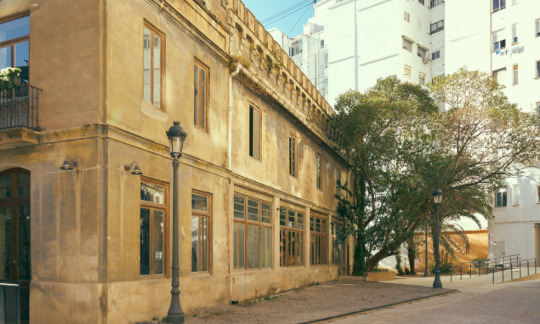


Mercat de la Impremta, the old industrial printing house Impremtes Vila turned into a food market. València city, Valencian Country.
Photos from Venues Place.
#valència#país valencià#fotografia#travel#market#marketplace#travel photography#architecture#wanderlust#europe#southern europe#traveling#curators on tumblr#industrial#urban#city#cities#travelling#explore
23 notes
·
View notes
Note
tfw has tingut un dia realment de merda i et vas a contar-lo al teu xicot, i et sorprèn amb unes roses i un llibre per al sant jordi, tot i que ambdos sou canadencs i no teneu aquest costum <3 <3 <3 <3 <3
Ohh 💖
15 notes
·
View notes
Photo
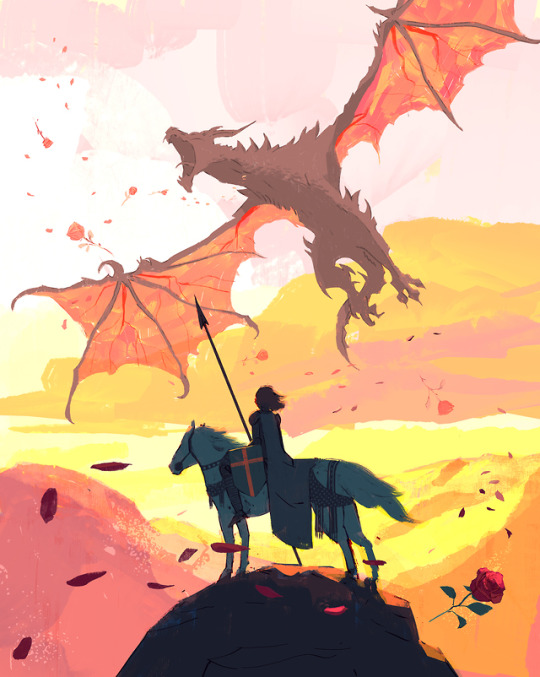
Yesterday was Sant Jordi day, here where I live (Barcelona), a festive day full of books & roses. Here a pic of the legend. Enjoy!
618 notes
·
View notes
Text
Happy Sant Jordi day!🌹📚🐉

In Catalonia is celebrated by gifting books and roses, "A rose for love and a book forever" and I believe is very sweet and more people should know about it!
Hope those celebrating are covered in roses and future reading material!
164 notes
·
View notes
Text
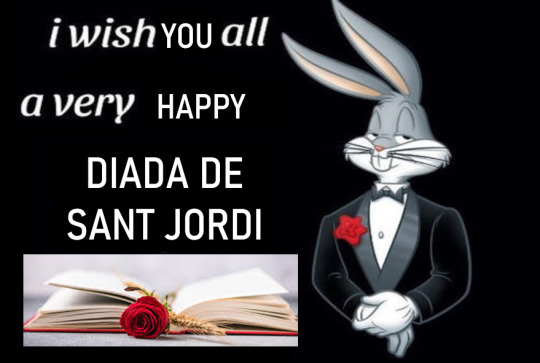
Diada de Sant Jordi is one of the most important festivals in Catalonia! Today all towns and cities are filled with little stalls selling books and roses, and it is traditional to give to your loved ones one of each!
As the day of books and love, I want to celebrate it with you too!
🌹Bona diada de Sant Jordi!📚
96 notes
·
View notes
Text
This murmur we hear is not rain.
It has not rained in a very long time.
The fountains have dried and dust accumulates
in streets and houses.
This murmur we hear is not wind
they have prohibited wind so it won’t rise
the dust which is everywhere
and the air won’t become -they say- unbreathable.
This murmur we hear is not words.
They have prohibited words so
they won’t risk
the air’s fragile immobility.
This murmur we hear is not thoughts.
They have been prohibited so that they won’t beget
the need to speak
and ensue, inevitably, the catastrophy.
And, still, the murmur persists.
This poem was written by the Catalan poet Miquel Martí i Pol (1929 – 2003). It was published in 1977 but it is still relevant.
My translation to English misses a lot of the beauty in the original poem, so here’s the original in Catalan:
Aquesta remor que se sent no és de pluja.
Ja fa molt de temps que no plou.
S’han eixugat les fonts i la pols s’acumula
pels carrers i les cases.
Aquesta remor que se sent no és de vent.
Han prohibit el vent perquè no s’alci
la pols que hi ha pertot
i l’aire no esdevingui —diuen— irrespirable.
Aquesta remor que se sent no és de paraules.
Han prohibit les paraules perquè
no posin en perill
la fràgil immobilitat de l’aire.
Aquesta remor que se sent no és de pensaments.
Han estat prohibits perquè no engendrin
la necessitat de parlar
i sobrevingui, inevitable, la catàstrofe.
I, tanmateix, la remor persisteix.
206 notes
·
View notes
